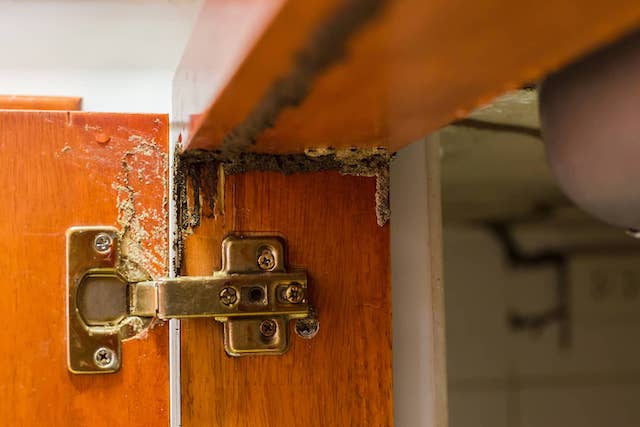
In Singapore’s humid tropical climate, termites thrive, often causing extensive damage to homes and buildings if left undetected. Spotting the early signs of a termite infestation is crucial in preventing costly structural repairs and termites treatment. Termites are silent destroyers, often working behind the scenes, so knowing what to look for can save your home from severe damage. Here’s a guide to help you identify termite damage early.
1. Hollow-Sounding Wood
One of the most common indicators of termite damage is hollow-sounding wood. Termites feed on wood from the inside out, which weakens the structure while leaving a thin layer of surface wood intact. To check for this, gently tap on wooden structures such as walls, floors, or furniture. If the wood sounds hollow or has a papery feel, it could be an indication that termites have hollowed it out. In homes where wooden furniture and fixtures are common, this is a critical first sign to watch for.
2. Mud Tubes
Subterranean termites, the most prevalent species found, build mud tubes to travel between their nests and food sources. These pencil-sized tubes are made from soil, wood particles, and saliva and are typically found along walls, foundations, and other structural surfaces. Termites use mud tubes to maintain the moisture levels they need to survive. If you notice mud tubes near your home’s foundation, it’s a clear sign of a potential infestation and an urgent reason to contact a termite control specialist.
3. Frass (Termite Droppings)
Termite droppings, also known as frass, are another key sign of termite presence. Frass resembles small, wood-colored pellets and is most commonly associated with drywood termites. These termites create tiny exit holes to push out their waste, and you may find piles of these droppings near wooden structures, door frames, and window sills. In Singapore, where drywood termites can be prevalent, the presence of frass is a strong indicator that termites are active inside your home.
4. Discarded Wings
Flying Termites, especially during their reproductive stage, shed their wings after swarming to find new colonies. Winged termites, also known as alates, leave behind piles of discarded wings near windows, doorways, or light fixtures. Singapore’s climate often triggers termite swarming after rainfall, especially in the evenings. If you find wings around your home, it’s a clear signal that termites may be establishing a colony nearby.
5. Bubbling or Peeling Paint
If you notice bubbling, peeling, or blistering paint on your walls or wooden structures, this may indicate moisture trapped beneath the surface. Termites can cause wood to swell and warp, which may lead to visible damage to painted surfaces. In Singapore’s high-humidity environment, this type of damage can occur quickly, especially when termites burrow inside wooden walls, creating space for moisture to accumulate.
6. Sagging Floors or Ceilings
As termites consume wooden support beams and structures, the integrity of your home’s foundation can weaken. Sagging or uneven floors, as well as drooping ceilings, are often signs that termites have severely damaged the internal structure. In Singapore homes, where timber is used in both interior and exterior design, this is a significant concern that warrants immediate professional inspection.
7. Termite Noises
If you listen closely, you might hear faint clicking or tapping noises coming from your walls. These sounds are produced by termites as they chew through wood or bang their heads against surfaces to signal danger to the colony. Termites are generally quiet, but in severe infestations, you may be able to hear their activity. This unusual sound is worth investigating, especially in areas prone to termite damage.
Conclusion
Spotting termite damage early can save you from costly repairs and extensive structural damage. Whether it’s hollow-sounding wood, mud tubes, or sagging ceilings, these signs should never be ignored. If you suspect termite activity in your home, it’s best to contact a pest control specialist who can provide an inspection and implement the necessary measures to protect your property. Regular monitoring and quick intervention are key to keeping termites at bay in Singapore’s conducive climate.
